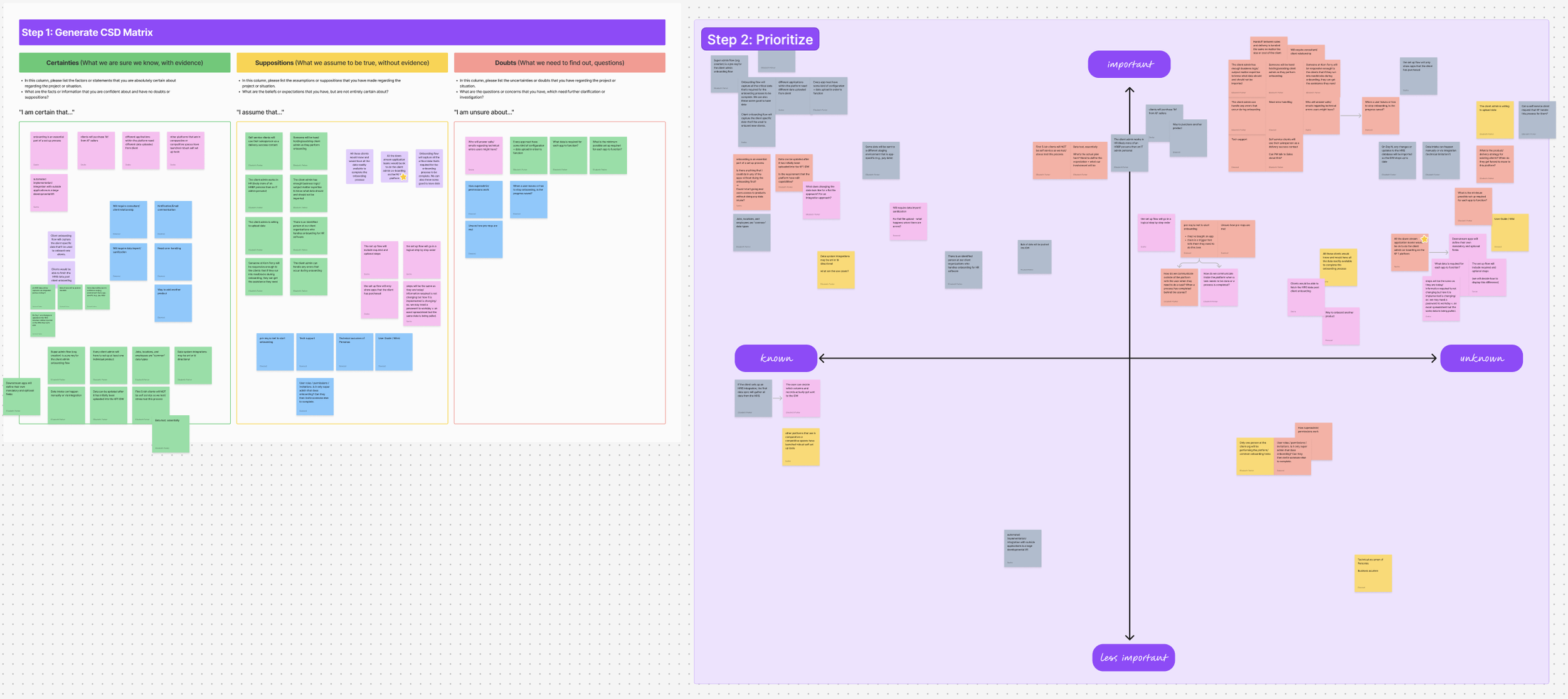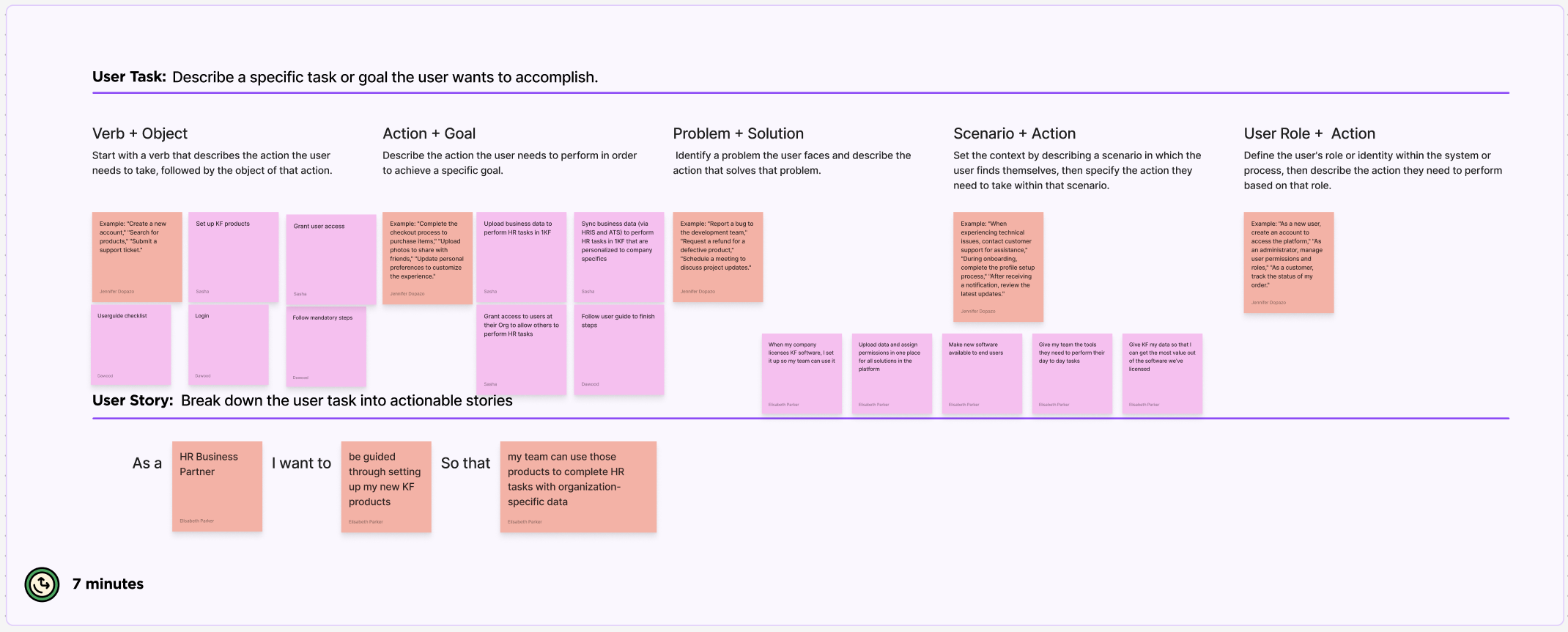Cross-functional workshop series
MY ROLE
Facilitation
Synthesis of results
THE TEAM
Designers
Product managers
Engineering lead
WHY
Early efforts to align on the big picture save cross-functional teams from the costly trap of waiting until design reviews to realize that, uh oh, we had different assumptions about how this feature would work, or worse, what user outcome we were even trying to solve.
THE OUTCOME
Shared documentation, often referenced throughout design and development
Alignment between previously disparate cross-functional teams

Kickoff! This step is an interactive, collaborative approach to requirements definition. Instead of listening to a PM read a Confluence page, this activity allows us to holistically answer core questions about the feature and unearth areas where we have doubt or misalignment.

Assumption mapping - What do we know? What do we assume? What are our questions? We prioritized all of these concepts based on their importance and their certainty. Afterwards, I sorted the concepts into action categories, such as user interview topics and requirements clarifications.

Before beginning design work, we build a simple persona for our primary target user. This exercise is used to remind the cross-functional teams of the true goal of this feature. It's also an artifact that we can return to throughout the design process to ensure our decisions are aligned with what we know about our user.

User flows - By illustrating basic user flows for the primary and any secondary users, as well as differentiating between Day 1 and Day N flows, we begin to map the user's needs into the realm of our product.

User story - we brainstorm many user tasks using various statements in order to align on a central user story. This is a simple but concrete statement that we will use as a north star throughout the design process.